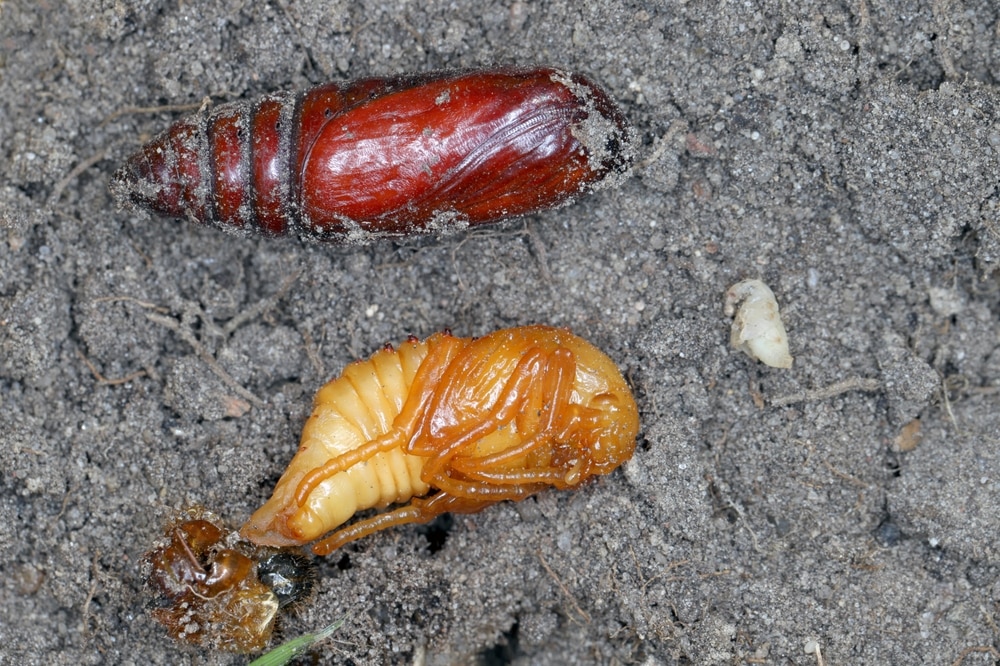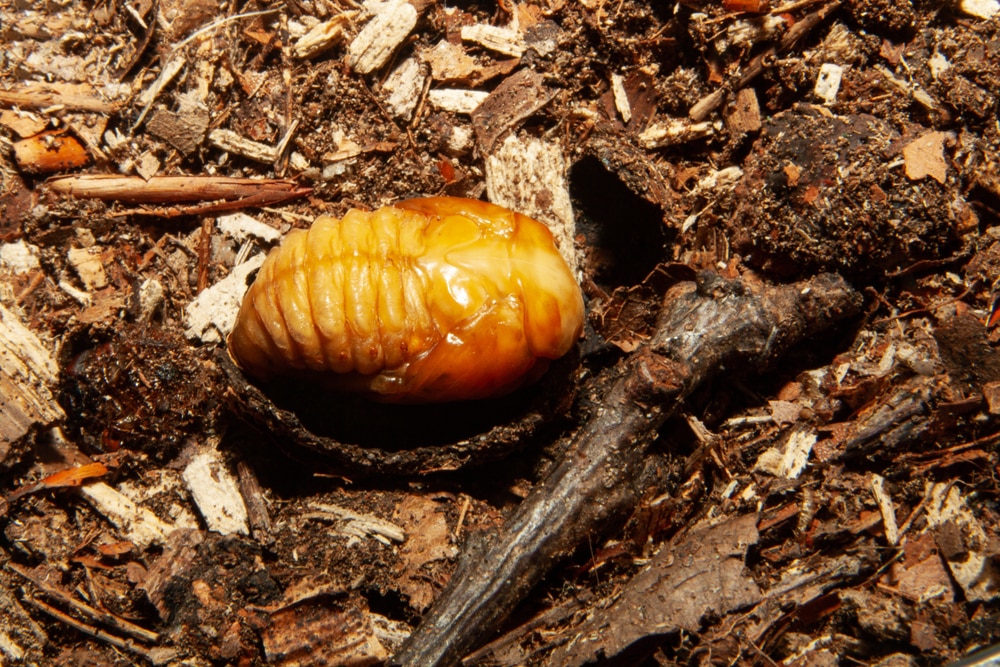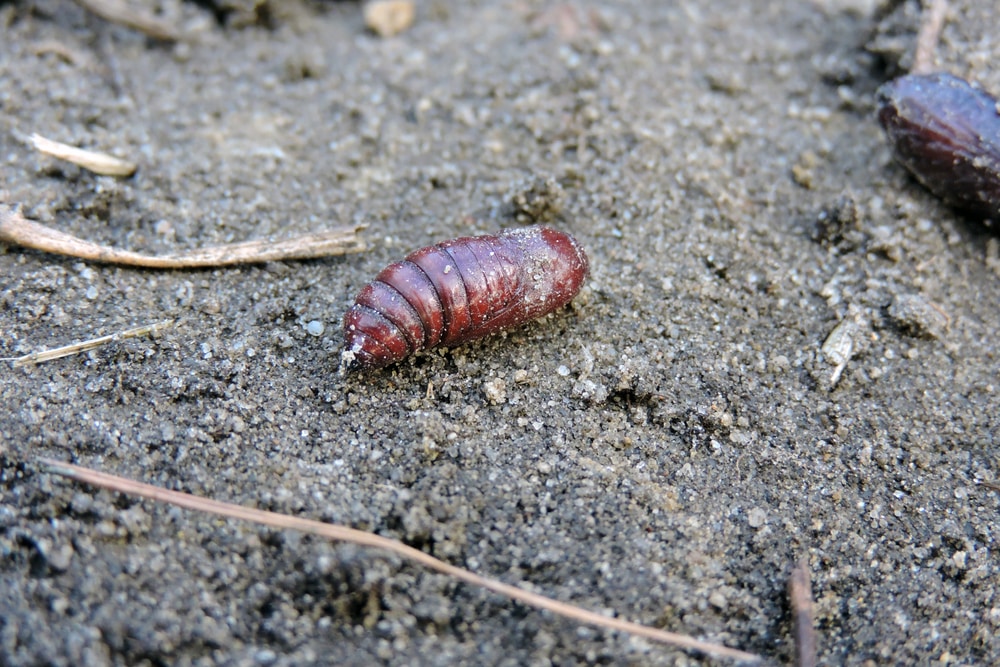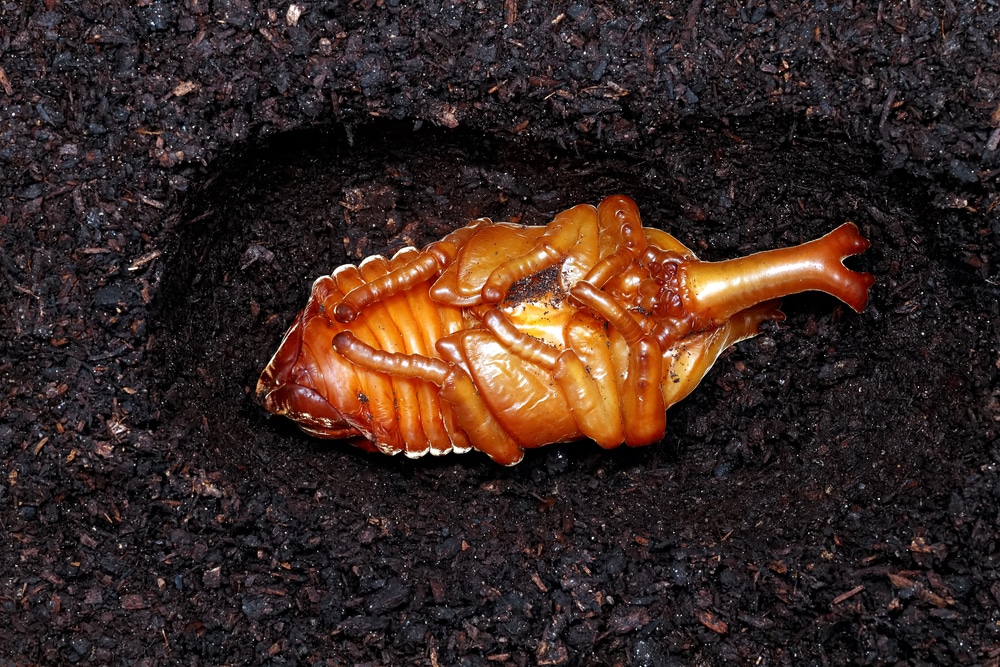Gardening is a fun hobby, rewarding you with fresh air, exercise, and of course, beautiful plants and flowers. Along with the experience of growing your own vegetable garden or seeing your flowers blossom in spring comes the occasional pests.
Pests are nothing to be ashamed of. All gardeners have them. The key is to identify the pest and then take the appropriate steps to get rid of them. While some are easy to identify, some gardeners may notice red grubs in their garden soil. If you’ve recently spotted one (or more), here’s everything you need to know about these red grubs.
Red Grub in Soil: What Is It?
Feeling dismayed or even a little bit of fear is normal when you see an unfamiliar bug in your home or garden. While there’s a wide range of red grubs you’d normally find in the soil, there are three common grabs paying a visit to gardens: the European chafer, cutworm moth pupae, and the Japanese beetle pupae.
European Chafer Pupae
The European chafer is a small, reddish-brown beetle approximately one-half an inch long. These pests are more common in the northeastern United States but can be found as far west as Colorado.
Easily distinguished by their V-shaped wing covers, these nocturnal pests are attracted to yards with a lot of grass. The European chafer beetle is most active during the summer months when female beetles lay their eggs in the soil. After about two weeks, the eggs hatch, and the grubs begin to feed on your lawn’s roots.
As they grow, European chafer grubs migrate deeper into the soil to avoid the heat and dryness of the surface. You’re most likely to see these pests in early spring or late fall when they come closer to the surface in search of food.
These grubs prefer dry and well-drained soils – making gardens an ideal place for them to live. If you have a healthy lawn, the grubs won’t do much damage. However, if your lawn is already stressed, the pests can quickly kill patches of grass.
Cutworm Moth Pupae
Most of the time, you’ll see their “casings” rather than the grubs themselves. Cutworm pupae are the stage between larvae and adult moths. These pests get their name from their habit of “cutting” young plants at the soil surface. They feed on leaves, stems, and roots – ultimately killing the plant.
Cutworms typically lay their eggs on crop debris in late spring or early summer. After about two weeks, the eggs hatch, and the larvae begin to feed.
As they mature, cutworms become nocturnal and are most active at night when they’re feeding on your plants. These pests prefer to feast on vegetables like cabbage, tomatoes, and peppers – but can damage just about any plant in your garden.
Japanese Beetle Pupae
Japanese beetle grubs are small, C-shaped pests that are approximately one inch long. These pests have a brown head and body with white stripes running down their backs.
As adults, Japanese beetles are attracted to the flowers of over 300 different plants – making them a significant threat to gardens. These pests lay their eggs in the soil in late June or early July. The eggs hatch after about two weeks, and the grubs begin to feed on the roots of your lawn grasses, vegetables, and other plants.
How to Get Rid of These Red Grubs in Your Soil?
A couple of these grubs in your soil won’t probably do any damage to your soil and plant. They might even help break down organic matter in your soil.
But it’s time to take action if you’re seeing an abnormal amount of these grubs or notice patches of dead grass. There are different ways to deal with these grubs, but the first step is proper identification.
If you have a small infestation of grubs, you can try to remove them by hand. Put on a pair of gloves and dig around the soil until you find the grubs. Once you’ve seen them, place them in a bucket of soapy water to kill them.
Alternatively, you can introduce nematodes that specifically target grubs into your soil. These microscopic worms parasitize the grubs and kill them within a few days.
You can also use chemicals to eliminate grubs, but this should be a last resort. Chemicals can kill beneficial insects, damage plants, and pollute the environment.
Red Grub in Soil: Final Thoughts
If you find a red grub in your soil, don’t panic! These pests are usually harmless, given that you have a healthy lawn. However, for gardeners with stressed plants, these grubs can cause serious damage.
Controlling and preventing grub infestations is integral to keeping your lawn and garden healthy. Fertilizing your lawn, maintaining a healthy thatch layer, and watering deeply and less frequently are all excellent preventive measures.



